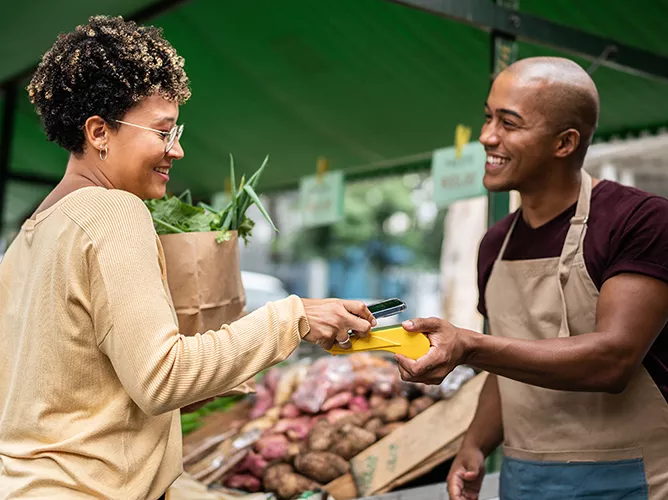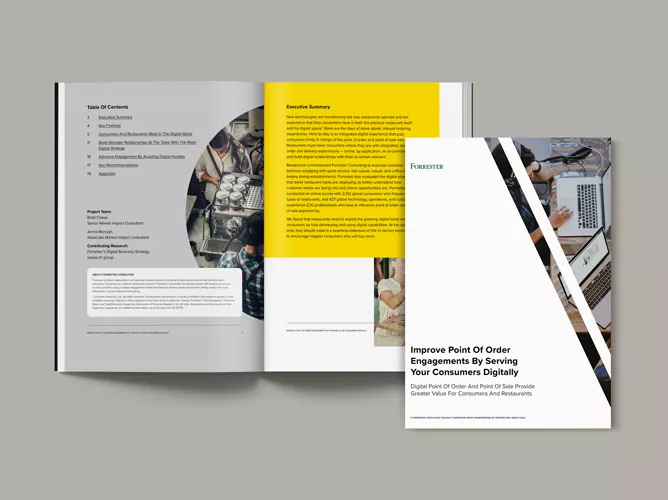By Erika Whitestone, customer success, financial institutions lead, Dynamic Yield, a Mastercard company
This article was originally published in Dynamic Yield's XP^2 Learning Center.
With the value of personalization at 92% in the financial services industry and at an all-time high for industries like ecommerce, where 98% of companies reported sharing a belief in its benefits,1 why have financial services been slower to adopt the practice?
Especially given that, unlike in ecommerce, where a customer may leave and never come back, the process of opening up an account with a financial brand is much more involved. Every click, form filled, or transaction made translates into an abundance of data that makes the financial industry uniquely well-positioned to activate personalization.
Typically met with more guardrails that can inhibit personalization efforts, the key lies in focusing on process – and at the heart of this lies the development of a strong audience strategy.
Addressing the elephants in the room (or organization)
It’s no secret that the financial services industry is among the most highly regulated, but here are some of the challenges that often present themselves when it comes to building a personalization program.
Structural silos
Separate teams manage different pieces of the digital customer experience and, therefore, more silos are created. Ownership can even vary from entire websites down to specific pages, and this disparity leads to valuable information about known users either being disconnected or lost. Exacerbated by the sheer amount of processes enforced around internal resource access, teams quickly become impeded when it comes to making changes that would improve the customer experience.
Methodology misalignment
While financial services may have the advantage of more customer data, results are dampened by a lack of proper methodology to put it into practice. Too focused on the ideal future state of website personalization, teams end up creating dozens and even hundreds of micro-segments to try and support the delivery of 1:1 experiences. Useful in certain scenarios, these granular segments are incredibly difficult to scale up and fraught with inefficiency, resulting in time wasted on tedious audience creation for campaigns that are either negligible in terms of audience size and impact or clash with other customer experiences.
An effective targeting strategy for financial services personalization
Already faced with organizational silos and long processes, teams operating within financial services simply cannot afford to employ ineffective segmentation and targeting strategies for their personalization programs.
Instead, they need to start with the basics, identifying and coming to understand what their 3-4 primary audiences represent and then using that information to personalize experiences accordingly. By consistently targeting, analyzing, and optimizing toward these few but important audiences, financial brands can circumvent their resource constraints and become more efficient, effective, and agile.
The guidelines for selecting your primary audiences
In choosing a set of primary audiences and developing experiences that speak to them, financial institutions should follow a few core guidelines:
- Audiences must be based on a single segmentation principle
- Only 3-4 audiences should be prioritized at the maximum
- Audiences should cover 100% of the site’s traffic
- All ideas, execution, and analysis are meant to stem from these primary audiences
If they take this focus, financial institutions can win in terms of new customer acquisition and growing their current customers’ activity, spending, and engagement. The key is to dedicate and align resources within the organization to ensure that the primary audience strategy is effective and scalable for personalization across the customer lifecycle.
Applying a primary audience-based personalization strategy for financial services
Recognizing that static segments from past activities may no longer be relevant, it is recommended to view audiences through the lens of behavior.
Some examples of segmentation principles for financial services include:
- Engagement Level – Are they logging in to pay their bills, signed up for automatic payments, or engaged in other telling activities?
- Lifecycle Phase – From prospect to early month on book, mature, or declining – where are they in the customer lifecycle?
- Product Attainment – How many products or services do they use, and are they in different categories (cross-sell opportunities)?
You can layer customer affinity on top of the primary audience to match the individual user in each audience to their interest. For example, one prospect may have an affinity to travel perks, while an early month on book customer may have an affinity for cashback. Or, a user with low engagement may have an affinity to home loans, whereas a high-engagement visitor might prefer information on auto loans.
Within each segment, you can also start to investigate what KPIs are most important to focus on and build out use cases to test a personalization strategy that aims to improve that metric. So long as you always have a control group to learn what works and doesn’t for each audience.
Some examples of personalization KPIs for financial services include:
- Open accounts click / apply click / get started click
- Application start or complete
- Form submission
- Mobile app downloads
Now, let’s put it all together with some examples that use “lifecycle phase” as the audience segmentation principle to optimize for different KPIs.
Recreate the consultative experience to guide customers to the right products and services
Primary audience: Prospect
Hypothesis: By targeting prospects with a guided questionnaire, we can better understand their wants and needs while helping them learn about the bank before ultimately surfacing the right product or service, which we believe will increase “apply” clicks.
Strategy: Trigger an overlay experience upon landing on the website for unknown visitors with five questions that ask about the user’s interests and personal goals, showcasing relevant articles and products upon completion.
See this use case in Dynamic Yield’s Inspiration Library.
Tailor on-site welcome messages according to audience
Primary audience: Early month on book
Hypothesis: By targeting early month on book users when they sign in with a hero slider on their account homepage that includes different messages about ways to get started, we believe we will increase click-through rate (CTR).
Strategy: When the early month on book users land on your website, change the hero banner to showcase messages about activation, registration, and ways to spend.
Recommend based on customers spending power and financial preferences
Primary audience: Mature customer
Hypothesis: By targeting mature customers with messaging about the benefits of additional products and services they aren’t currently signed up for, we believe we will increase “apply” clicks on those products.
Strategy: When a mature customer arrives on-site, showcase a product recommendations widget on their account homepage and across product category pages with additional relevant offers and services.
See this use case in Dynamic Yield's Inspiration Library.
Communicate time-sensitive offers to increase conversions from low-engagement customers
Primary audience: Declining customer
Hypothesis: By targeting declining customers with special timely offers, we believe we will create a sense of urgency and encourage them to act, increase offer CTR (and decrease decline rates).
Strategy: When a declining customer lands on-site, showcase time-sensitive offers either in the form of a homepage hero banner, notification, or overlay message that can include a countdown timer.
Primary audience methodology alleviates institutional constraints to bring sustainable personalization to financial brands
To stay ahead in the competitive financial service market and unlock personalization’s power in an industry ripe with data, teams should focus on a process that allows them to analyze customer data iteratively, test new ideas, and continually improve the customer experience.
By honing in on the primary audiences methodology outlined today, those within financial services will be on their way to better understanding their customers and delivering digital experiences that will provide value to both them and the business.
To learn more about Dynamic Yield, a Mastercard company, click here.













